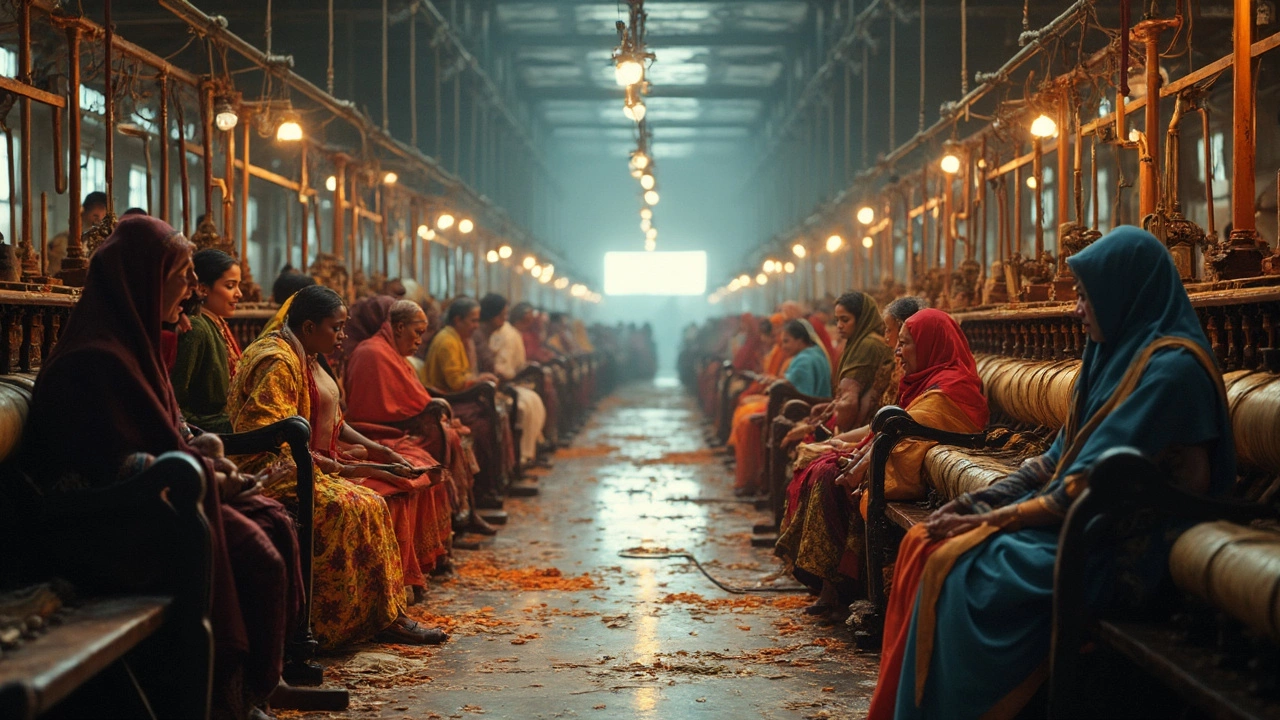- India's Electronics Manufacturing Rank: A Deep Dive Mar 3, 2025
- AI Chip Manufacturing in India: Who Makes Them and What's Next? Jul 28, 2025
- Understanding the Dynamics of Small Scale Production Processes Jan 7, 2025
- How Many Textile Manufacturing Companies Are There in India? Feb 25, 2025
- Expensive Fabrics in India: What Makes Them Costly? Jun 8, 2025
Textile Jobs in India: Where to Find Them, What You Need, and Why They Matter
India’s textile sector is buzzing with new roles, from design studios in Delhi to production lines in Gujarat. If you’re looking for a steady paycheck and a career that blends creativity with tech, a textile job might be your ticket.
Fast‑Growing Areas in the Textile Industry
First off, know which segments are hiring fast. Smart fabrics and technical textiles are exploding thanks to demand from sports gear and medical supplies. Traditional weaving hubs like Varanasi still need skilled weavers, but they’re also adding machine‑operated looms that need operators who can read digital panels. Then there’s apparel manufacturing for export – factories near Bengaluru and Chennai are expanding to meet global orders, opening slots for supervisors, quality controllers, and logistics coordinators.
Another hot spot is sustainability. Brands are hunting for experts who can source organic cotton, manage water‑saving processes, or certify products under global standards. If you can talk waste‑to‑fiber or recycling loops, you’ll find postings that pay a premium.
How to Get Hired in a Textile Job
Start by polishing the basics: a diploma in textile technology, fashion design, or a related trade will get you past the resume filter. If you’re coming from a different background, short certification courses in CAD for patterns or in textile testing can bridge the gap.
Next, build a mini‑portfolio. Even if you haven’t worked in a factory, a few fabric swatches, design sketches, or a simple project that shows you understand yarn counts and weave structures will make hiring managers sit up. Upload it to LinkedIn or a personal site and tag it with #TextileJobs.
Networking still beats cold applications. Join local textile associations, attend virtual webinars on sustainable fabrics, and chat with recruiters on industry forums. A quick coffee with a plant manager can turn a casual conversation into a trial shift.
When you land an interview, focus on practical anecdotes. Talk about a time you reduced material waste by 15% or how you fixed a loom’s tension issue in under five minutes. Employers love numbers that prove you can boost efficiency.
Finally, keep an eye on government schemes. The Ministry of Textiles runs skill‑development programs that often include a job placement guarantee. Signing up not only sharpens your skill set but also puts you on a list that large exporters scan regularly.
Bottom line: textile jobs in India are diverse, growing, and accessible if you match the right skills with the right network. Whether you’re a designer, a machine operator, or a sustainability guru, there’s a spot waiting for you. Start polishing your resume, showcase a small project, and tap into industry groups – the next textile role could be just an email away.
Indian Textile Industry Collapse: What Really Happened and What It Means for Manufacturers
- Aarav Sekhar
- Apr 23, 2025
The Indian textile industry, once a global powerhouse, has seen a dramatic downturn in recent years. The decline wasn't caused by one thing, but a perfect storm of rising costs, outdated technology, and tough competition from abroad. Job losses hit millions, and many small manufacturers struggled to survive. This article breaks down exactly why the industry collapsed, who got hurt, and what can be done to turn things around. If you’re in textiles or just curious about big shifts in global manufacturing, you’ll find facts and practical tips here.
